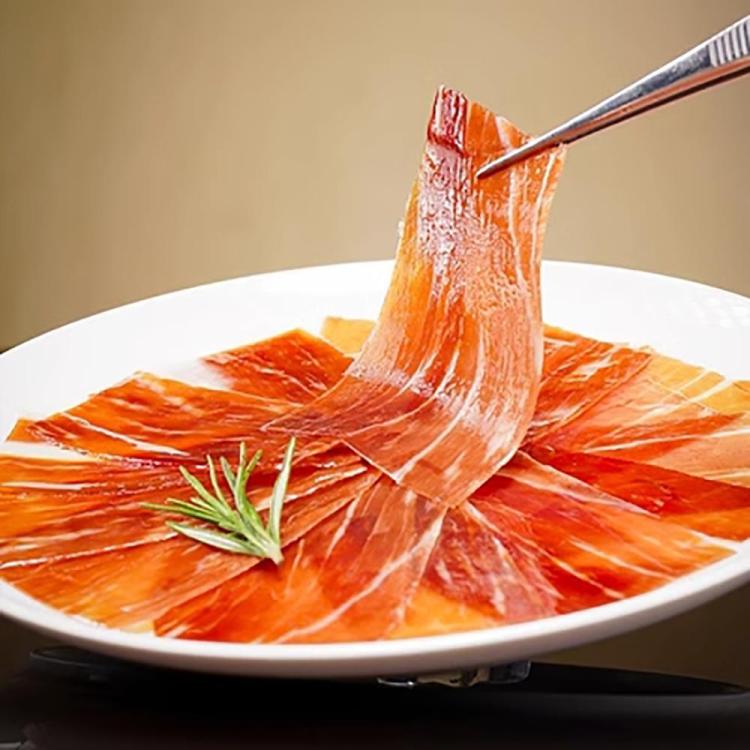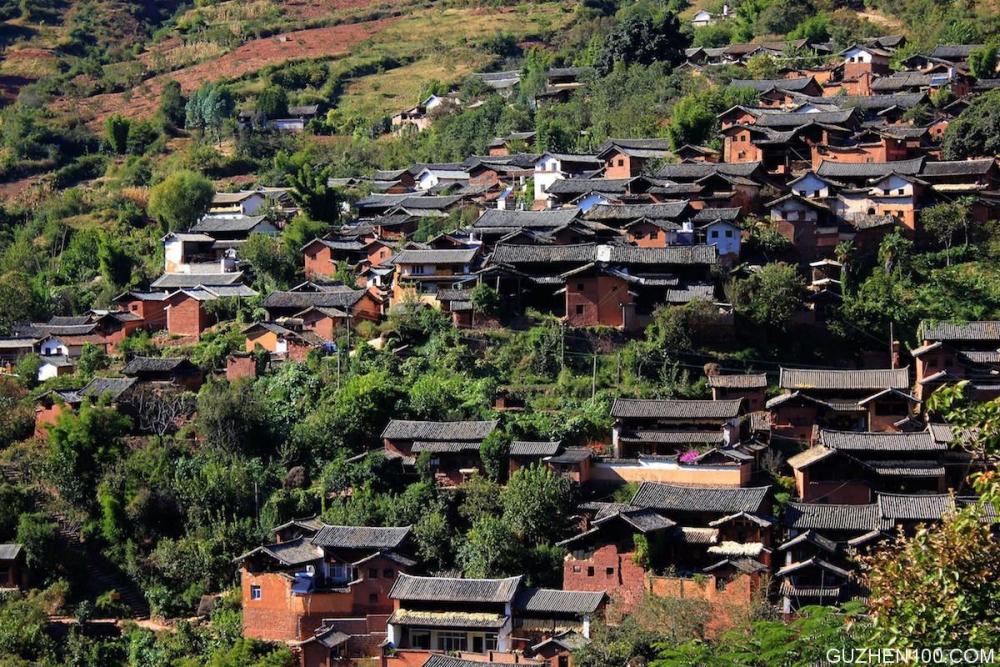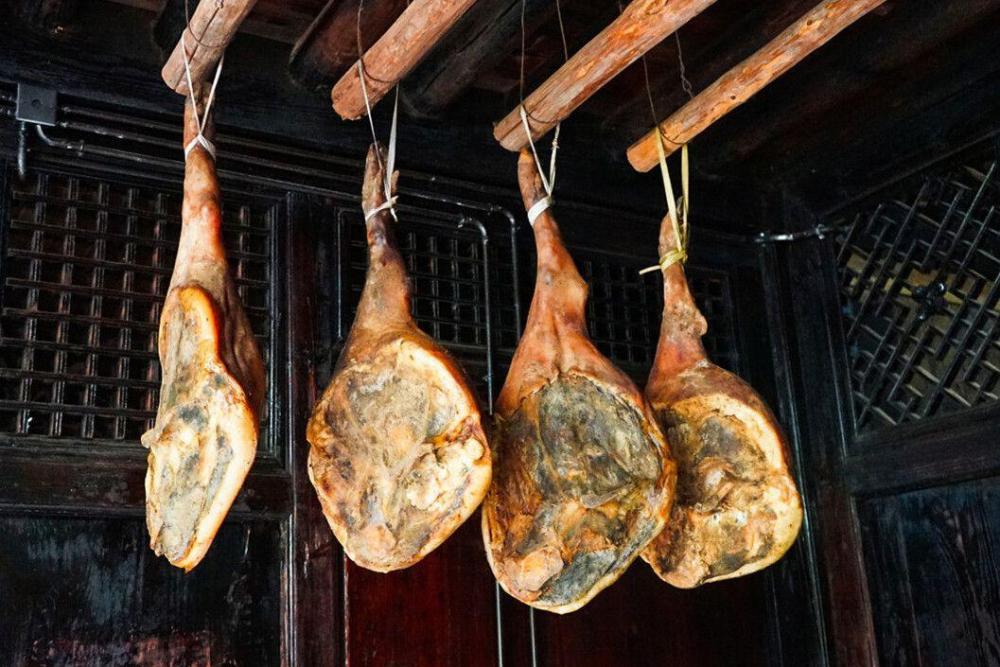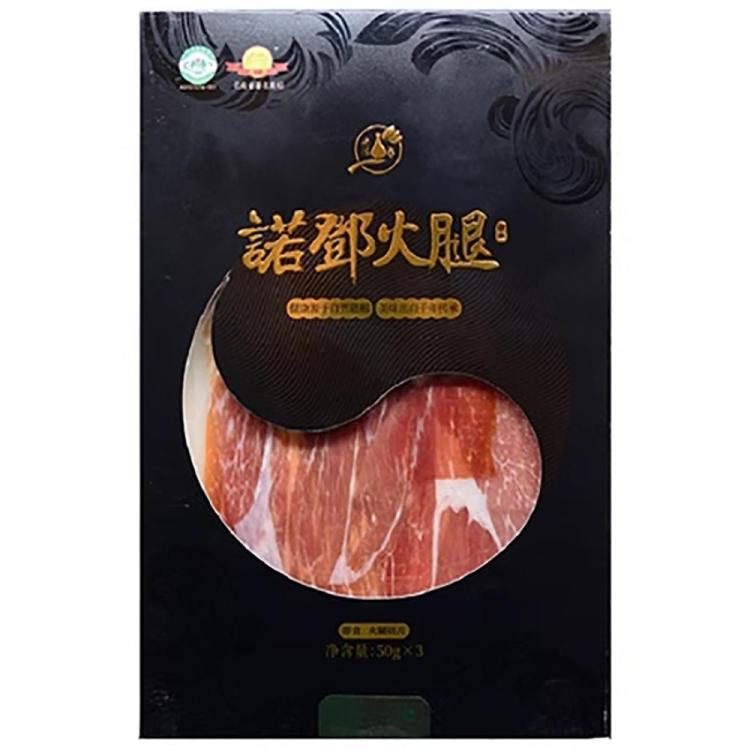Somehow, I had almost forgotten this topic, but a recent encounter reminded me. So another ham for your delight – this time one of the most interesting rare and, in my view at least, one of the finest.
I’m talking about 诺邓火腿 (nuò dèng huǒ tuǐ), Nuodeng ham (above) from Yunlong County, Dali Prefecture, Yunnan province. This is a highly protected product which can only be made under strict conditions in one small village and its surrounding mountains and valleys. Nuodeng village 诺邓村 (nuò dèng cūn) is populated by people of the Bai ethnic minority.
Nuodeng Village - image: guzhen100.com
The hams come from a local, black skinned breed known as 诺邓黑猪 (nuò dèng hēi zhū), Nuodeng Black Pigs which are relatively hair-free. These roam freely in the mountains eating wild plants and herbs. When they reach the right size they are fattened for about a year by being fed corn and soy beans. Curing begins around the Spring Festival which is just over, so basically they are working on them as I write.
The legs are carefully bled and as many blood vessels as possible removed. Then they are sprinkled with the local grain wine. After being left for a day or two, they are then salted. But not with any old salt. The area is known not only for its pigs but for its salt wells which have been mined since the Tang Dynasty (618 to 907 CE). It is high in potassium, magnesium and other trace elements. The legs are covered in this salt which is massaged into the flesh. This procedure is then repeated and the hams placed in wooden barrels, covered with a lid and left for around three weeks.
After that, the hams are removed and again covered, this time in a mix of ash, salt and the local mud. These muddy hams are then suspended from the peoples’ rafters for a minimum of a year but more typically three to five years.
After two years, the hams develop a green mould, which looks like they are spoiled but when this outer coating is removed one can see that the insides are unaffected but, according the locals, the taste is much improved.
Nuodeng hams drying and showing the characteristic green mould
I have only ever eaten the 3-year version and it was great. Easily as good as jamón ibérico, if maybe not jamón ibérico de bellota. Of course, it doesn’t come cheap. $USD 180 / kg. expensive by Chinese standards. I spent $55 for 300 grams.
150 gram pack of Nuodeng ham






